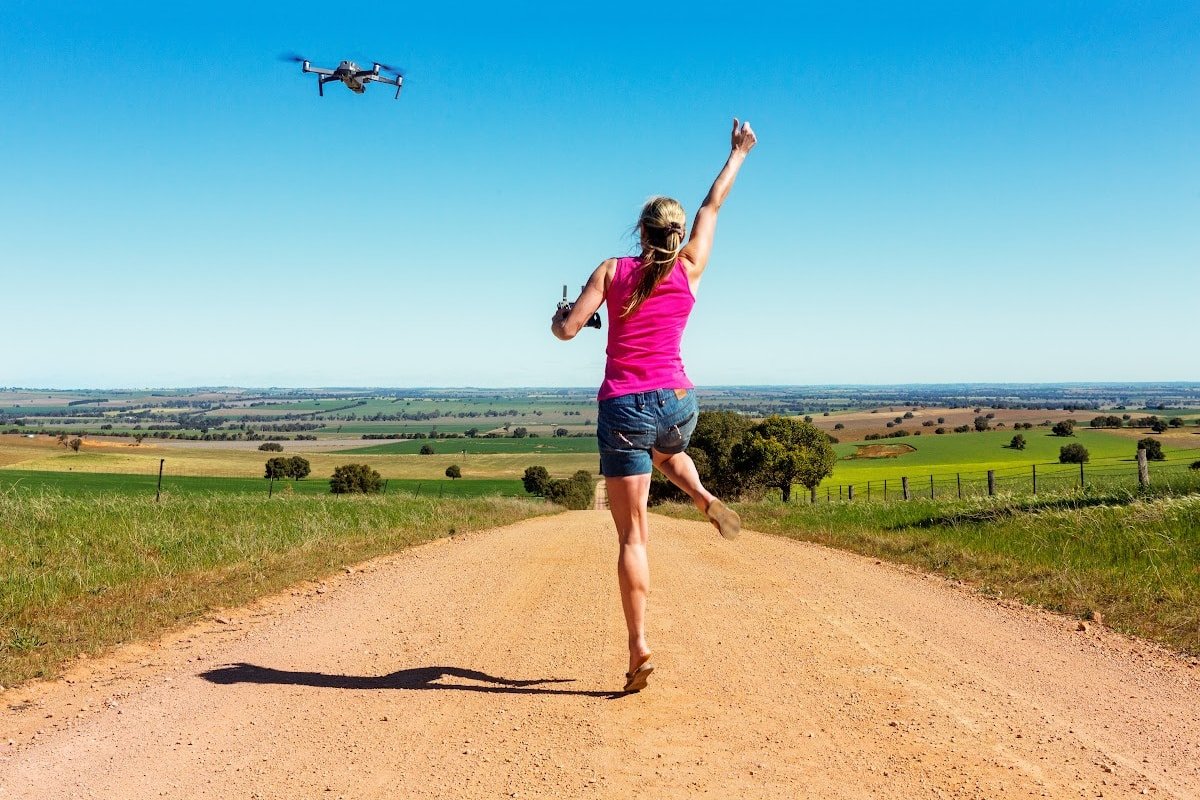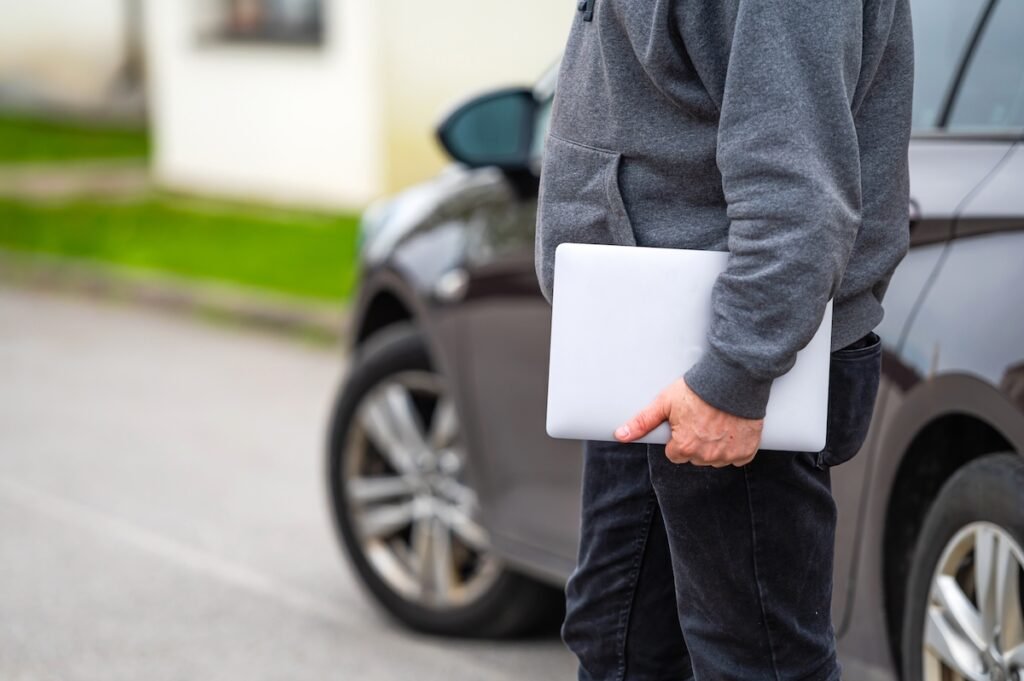Are you looking for the best drones available today in the market and online stores? Do you want to get a drone for your family but don’t know which one to choose? Looking at getting a drone can be a daunting task. There are really cheap drones and really expensive, high-end drones. We’ve reviewed some of the best entry-level drones on the market and honed in on three drones that we think deserve to be on your radar.
DJI Mavic Air 2
With Mavic Air 2, you can be creative while flying. Fans of drones will appreciate their quick pace, high-res camera, and battery life. On top of that, it is affordable. In comparison to its predecessor, the Mavic Air 2 is bigger. The difference is not really noticeable, but that added tech which added more weight is worth it. With just 1.2 pounds, it is portable and foldable. When folded up, it resembles a medium-sized telephoto lens. In fact, I think my first cellphone was bigger than this drone folded up.
The camera sensor has undergone a massive upgrade as well. Still, DJI’s new drone offers a half-inch sensor for better photos. Using multiple images, you can get 48 megapixels per frame, which look impressive, especially if taken under ideal conditions (e.g., when the wind isn’t too strong).
While the Normal and Cine modes are good protection, it is less effective in Sport mode due to the fast-moving subject. I didn’t think I’d like Sport mode, but I’ve found myself using it a lot when I’m trying to test out the speed, and maneuvers, and push the limits of the drone. Other than that, I rarely use Sport mode if I’m recording or taking pictures.
DJI Mavic Air 2 Specifications
- Brand: DJI
- Model Name: DJI Mavic Air 2
- Color: Gray
- Control: Remote Control
- Capture Resolution: 4K HD (and it is impressive, like movie quality impressive)
- Batteries: Yes (if you get the upgraded package you can get 3 batteries)
- Item Weight: 1.2 lbs
- Maximum Range: 18.5 Kilometers (although I recommend never pushing it to this range)
- Optical resolution: 4K HD
DJI Mavic Air 2 Pros
- Long battery life (especially in ideal conditions)
- High-quality images and videos
- Anticipating and avoiding obstacles
- Automatic shots
- Raw and HDR videos
- AirSense (their alert system that uses ADS-B technology)
DJI Mavic Air 2 Cons
- Standard and flat video profiles only
- Apps can only output 1080p (but you can still transfer video in 4K)
- Raw images aren’t accessible on your tablet or phone until after you transfer them
Holy Stone HS720 Foldable GPS Drone
In terms of an affordable HD camera with innovative features like GPS, intelligent flight modes, and a long flight time, the Holy Stone HS720 is a great choice. There are three intelligent flight modes, a good 4K camera, and a well-designed drone. I’d definitely say the intelligent flight mode is one thing that separates the Holy Stone from DJI. BUT…I didn’t find myself using it once I had down the basics of flying.
As a drone pilot, I enjoy flying them because many have HD cameras and the Holy Stone HS720 has a great 4K camera that lets you take aerial pictures and record HD videos. You can capture more details with a 110° FOV and 1/3 CMOS sensor. Dual GPS aids it in hovering, flying, and hovering well at high altitudes. When it comes to the Holy Stone, I can’t help but think that even a better drone would require a lot more money. The app’s quality, intuitive controls, and user-friendliness stand out quite a bit too.
Holy Stone Drone Specs:
- Brand: Holy Stone
- Model Name: HS720
- Color: Black
- Control: Remote Control
- Material: Plastic
- Capture resolution: 4K HD
- Batteries: Yes
- Item Weight: 1.01 pounds
- Maximum Range: 999 Meters
- Battery Capacity: 2800 Milliamp Hours (about 22-25 minutes)
- Battery: Lithium metal batteries (included)
Holy Stone Drone Pros
- Flight Modes Available
- Control Range: 999 Meters
- Controls that work well
- Easily transportable motor arms
- The attractive design stands out
Holy Stone Drone Cons
- Charges slowly
- There have been some issues with calibrating take-off and return-home functions
Ruko F11 GIM2 Drone
These small, entry-level consumer drones are attracting a lot of attention these days. The market for entry-level drones continues to grow. Ruko F11 GIM2 has various high-end features you won’t find in cheap drones. In fact, a lot of entry-level drones don’t have some of these features.
After comparing it with the Ruko F11Gim, I didn’t find any differences that impressed me. Nothing really stood out with the new version. I do, however, still really like the Ruko overall for an entry-level drone.
There are now USB-C connections for the controller and batteries, which I appreciate. The controller’s interface has improved as well. The controller shows you how much power it still has when it starts (this is a no-brainer if you ask me). Also, I love how the display shows distance, height, and speed when powered. The app interface is rather intuitive AND useful.
Overall, the controller and drone seem to be well-built and sturdy. It feels sturdy and felt great in my hands. It feels like it should be there. A device of this price range should have many upscale features, which this device does.
Ruko Drone Specs
- Brand: Ruko
- Color: Dark gray
- Mirror Adjustment: Remote Control
- Video Capture Resolution: 4K HD
- Batteries: Yes
- Wireless Communication Technology: Cellular
- Item Weight: 585 Grams (about 1.3 pounds)
- Battery Capacity: 2500 Milliamp Hours
- Battery Cell Composition: Lithium-Ion
Ruko Drone Pros
- Constructed to last (one of the most durable entry-level drones)
- GPS module, long flight time
- An easy-to-use 4K UHD camera
- Adaptive flight modes
Ruko Drone Cons
- Poor gimbal stabilization (I noticed some hiccups with gimbal stabilization and the gimbal motor overheating ~ this is normal with average drones)
What To Look For In A Drone If You’re New
Drones can be difficult for beginners. Like really difficult. In fact, I know a dozen people who crashed their drones on one of their first three flights. Several features are necessary for successful operation AND will help you not crash this pricey investment.
Device Range
Your drone will perform better if it can fly farther from the transmitter. Some drones with lower prices range to just 30 meters or so, while those with higher prices can travel for miles without losing contact. A word of advice: don’t push the limit on the device range. I once had my DJI at about 15 km and lost connection. And DJI is known for its Return To Home (RTH) feature so if your battery gets too low or you lose connection, you most likely will be okay. Unless you are an advanced drone pilot, it’s best to hang tight and keep close to your drone (and it might be illegal in your area to push your drone to its max range). In fact, in most states, you have to maintain visual contact with your drone at all times unless you have an advanced drone pilot’s license. Again…this depends on your region’s laws and regulations. Always best to double-check them.
Camera
Drone users usually use them to place cameras in the air. Due to this, most drones feature either an inbuilt camera or can fit an external camera. Despite the decreased flight time, the drone can capture amazing images and videos that would otherwise be impossible.
Flight Time
AFTER one full charge, the flight time of a drone is how long it will be in the air. Generally, drones last 11-18 minutes. Recent entry-level drones, however, can fly up to 22 minutes and I’ve been able to push some of my DJI batteries to 30 minutes of flight time. Having a flight time tells you how long you can use your gadget without interruption. One thing I’ve noticed that greatly affects the flight time of your drone is wind speed and recording time. If it’s moderately windy, it will affect flight time as much as 20-30%.
A Word Of Caution About Flying Drones…
Flying drones is very fun. I’ve been blown away at the footage and perspective Drones can give us. Flying a drone is a great way to get an aerial view of your property or recreational activity, but there are a few things you need to know before you take off. First, check the weather conditions to make sure it’s safe to fly. High winds can make flying difficult, and you don’t want your drone getting caught in a storm. Even if your drone has high-tech stabilizer sensors, you need to be aware of the weather. Second, make sure you have a clear idea of where you want to fly. It’s important to stay aware of your surroundings and avoid flying near power lines or other potential hazards. It’s understandable if you’re flying somewhere new, but you’d be surprised how quickly you can lose your bearings when flying a drone, especially at higher altitudes. Finally, be sure to follow all local laws and regulations regarding drones. They vary by state and region. Remember: flying a drone can be a fun and rewarding experience BUT you assume the risks and the responsibility once that piece of aerial tech takes to the skies under your control.








